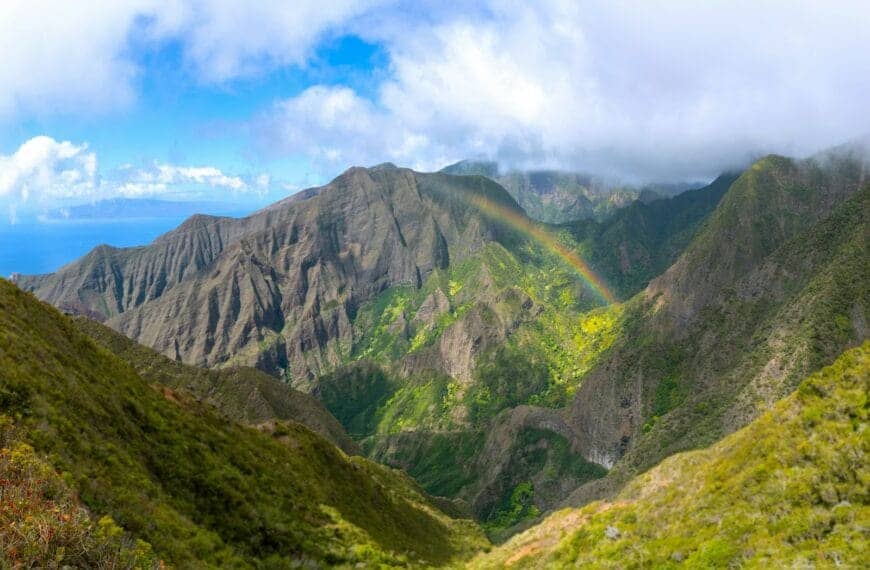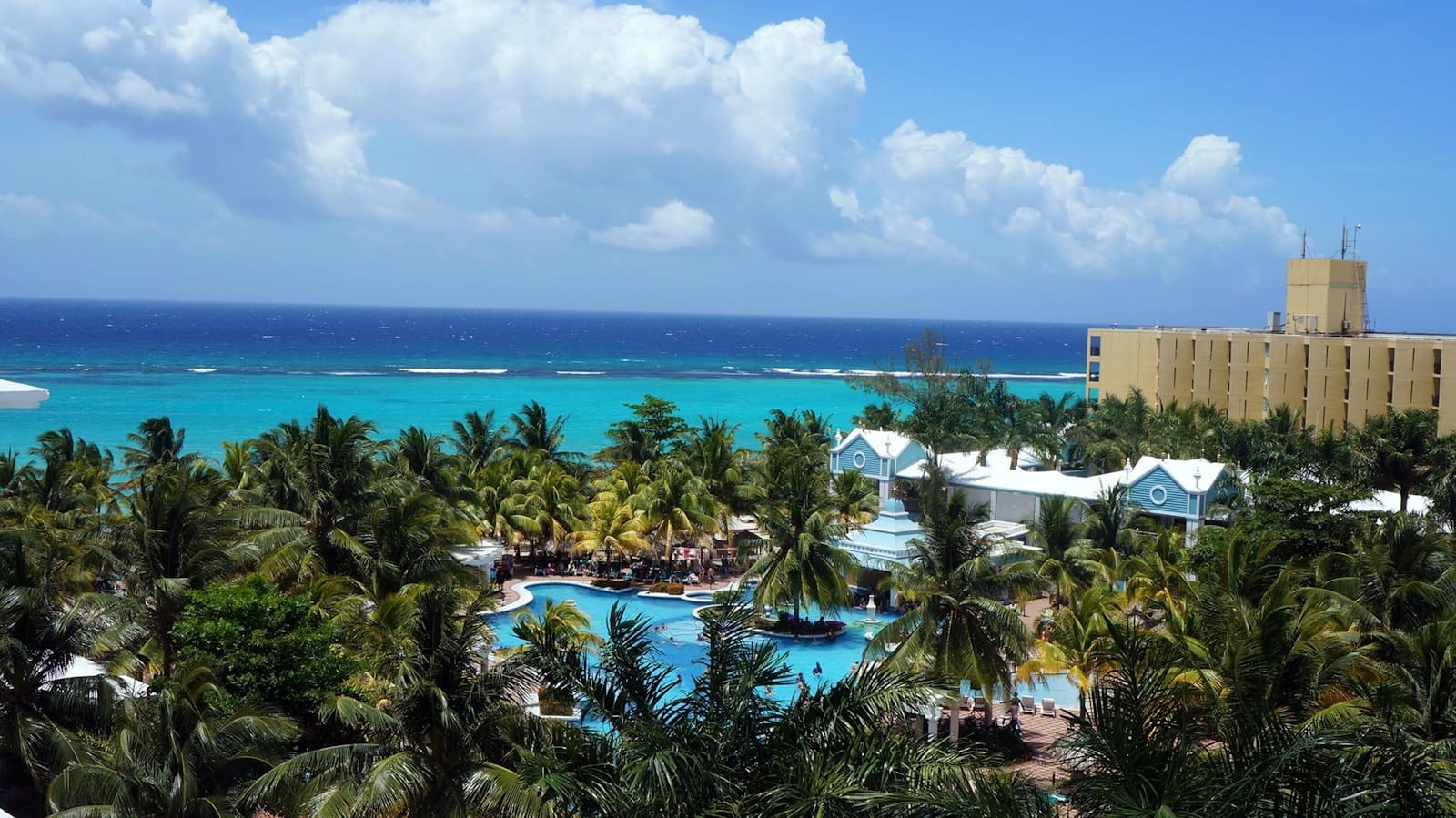Explore North America – Road Trips, Culture, and Top Sights
Intro to Explore North America
From Arctic tundra and alpine peaks to rainforests, deserts, and tropical beaches, North America is a land of immense variety — both culturally and geographically. Spanning from Canada’s northern reaches to Mexico’s Maya heartlands and the Caribbean’s vibrant islands, it offers a world of experiences across just one continent.
Whether you’re hiking glacier trails, exploring Indigenous heritage, cruising coastal highways, or tasting regional flavors, North America invites travelers into a bold fusion of nature, innovation, and multicultural stories. Seamless travel infrastructure and open-access national parks make it ideal for first-timers and seasoned adventurers alike.
Start your journey with our complete North America travel guide and explore every country, region, and experience waiting for you.
Countries and Territories to Explore in North America
Antigua and Barbuda | Bahamas | Barbados | Belize | Canada | Costa Rica | Cuba | Dominica | Dominican Republic | El Salvador | Grenada | Guatemala | Haiti | Honduras | Jamaica | Mexico | Nicaragua | Panama | Saint Kitts and Nevis | Saint Lucia | Saint Vincent and the Grenadines | Trinidad and Tobago | United States
💡Quick Facts:
Continent: North America
Region: N/A
Area: ~24.71 million km² (9.54 million mi²)
Population: ~605 million (2024 est.)
Density: ~24 people/km²
Capital: N/A (continent-level)
Regions/Subregions: Northern America (U.S., Canada, Greenland), Central America, Caribbean
Language(s): English, Spanish, French, Dutch, Haitian Creole, various Indigenous and regional languages
Currency: U.S. Dollar (USD), Canadian Dollar (CAD), Mexican Peso (MXN), Central American currencies, Caribbean currencies
Time Zone: UTC–10 to UTC–3; daylight saving varies by country
Airports: Major hubs include Atlanta (ATL), Toronto (YYZ), Mexico City (MEX), Miami (MIA), Panama City (PTY)
Climate: Ranges from Arctic (north) to tropical (Caribbean, Central America); temperate zones in U.S. and southern Canada
Known For: Natural diversity, national parks, multicultural cities, global tourism, trade blocs (USMCA), ancient civilizations
🛂Arrival Info:
Entry Requirements: Passport required for all non-domestic travelers; visa rules vary by country
Visa-Free Countries: Many countries allow visa-free or visa waiver entry based on bilateral agreements
Visa on Arrival: Offered by some Caribbean and Central American countries
Maximum Tourist Stay: 30–180 days depending on nationality and destination
Electronic Travel Authorization: Required for Canada (eTA), U.S. (ESTA), some Caribbean nations
Visa Portal: Country-specific
Customs Info: Strict import regulations in U.S., Canada, and Mexico; duty allowances vary by country
💉Health Info:
Vaccines Recommended: Routine (MMR, flu, Tdap), Hepatitis A/B, Typhoid (for Central America)
Local Health Risks: Mosquito-borne illnesses (dengue, chikungunya, Zika in tropical zones)
Hospitals: Excellent in U.S. and Canada; limited in some rural Caribbean or Central American regions
English-Speaking Clinics: Available in major cities and tourist zones
Terrain-Specific Concerns: Altitude (Mexico City), hurricanes (Caribbean), heat in U.S. Southwest
Insurance: Strongly recommended due to high costs in U.S. and limited access in rural areas
Emergency Care: Advanced in North America; variable in Central America and islands
✅ Check travel insurance options for travel emergencies, delays, and medical needs abroad — Get coverage here
✅ Stay Informed with Official Updates: WHO – International Travel & Health | CDC – Travel health updates
🚨Travel Advisory:
Current Alerts: Vary by region — gang violence (Haiti), protests (Mexico), hurricane alerts (Caribbean)
General Safety Level: Safe in most areas; urban crime in some regions
Regional Restrictions: Some inner-city areas and borders have travel cautions
Local Risks: Theft, scams, corrupt officials (Central America), natural disaster alerts
Civil Rights Concerns: Varies — strong protections in U.S./Canada, weaker in some Latin regions
City-Specific Alerts: Carjackings (Honduras), strikes (Panama), local crime hotspots (Mexico)
✅ Stay Informed with Official Updates: US Travel Advisory | UK Foreign Travel Advice
📅Holidays:
Major Shared Holidays (observed differently by country):
– New Year’s Day – January 1
– Independence Days – July 1 (Canada), July 4 (U.S.), September 16 (Mexico)
– Thanksgiving – October (Canada), November (U.S.)
– Labor Day – May 1 (Mexico/Central America), September (U.S./Canada)
– Christmas – December 25
Festivals & Events:
– Day of the Dead – Nov 1–2 (Mexico)
– Calgary Stampede – July (Canada)
– Carnival – February (Caribbean)
– Semana Santa – March/April (Central America)
💰Visitor Info:
Currency: USD, CAD, MXN, BZD, CRC, XCD, and others
Exchange Tips: ATMs widely available; use bank counters; avoid airport kiosks for best rates
Cards & Tipping: Credit/debit widely accepted; tipping norms vary (10–20%)
Duty-Free Limits: 1–2 liters of alcohol, 200 cigarettes, other goods vary by country
Cash-Only Areas: Remote villages, street vendors, local buses
Tourist Taxes: Hotel taxes common (e.g., U.S. occupancy tax, Mexican resort fees)
Daily Budget Range:
– Budget: $50–$100 (Central America, Caribbean); $80–$150 (U.S./Canada)
– Midrange: $150–$300
– Luxury: $350+
✈️Airports:
Major Hubs:
– U.S.: Atlanta (ATL), Los Angeles (LAX), JFK (NYC), Miami (MIA), Dallas-Fort Worth (DFW)
– Canada: Toronto (YYZ), Vancouver (YVR), Montreal (YUL)
– Mexico: Mexico City (MEX), Cancún (CUN)
– Central America: Panama City (PTY), San José (SJO), San Salvador (SAL)
– Caribbean: Nassau (NAS), San Juan (SJU), Punta Cana (PUJ)
Airlines: American Airlines, Air Canada, Aeroméxico, Copa, WestJet, United, Delta
Airport Transport: Airport rail and taxis in major cities; shuttle and ferry transfers in islands
Classification: International hubs and regional connectors
✅ Delayed or canceled flight? Check if you’re eligible for compensation
🚍Transport:
Local Transit:
– Metro/subways in U.S., Canada, and Mexico
– Buses and shared taxis in Central America and Caribbean
Intercity Transit:
– Amtrak (U.S.), VIA Rail (Canada), ADO (Mexico), long-distance buses
Driving Laws: Right side; IDP required in some countries for foreign licenses
Rental Availability: Common in all countries; insurance required
Common Scams: Fake taxis, “broken meter” scams, inflated toll road charges
✅ Book reliable airport transfers and in-city rides in advance. Reserve your ride here
📶Connectivity:
SIM & eSIM Access: Easily available at airports and stores
Best Traveler SIMs: T-Mobile (U.S.), Rogers (Canada), Telcel (Mexico), Digicel (Caribbean)
Coverage Quality: Excellent in urban areas; rural gaps in mountain/jungle zones
Public Wi-Fi: Widely available in cafés, airports, hotels
Roaming: U.S./Canada often bundled; expensive between countries — use local or regional eSIM
✅ Stay connected abroad with affordable eSIM data packs. Get your eSIM here
📜Laws & Etiquette:
Drinking Age: 18–21 depending on country
Alcohol Rules: Public drinking banned in many U.S. and Canadian cities; restricted hours elsewhere
Smoking Rules: Banned indoors in most countries; designated smoking areas enforced
LGBTQ+ Laws: Full protections in U.S./Canada; mixed rights in Central America and Caribbean
Cultural Taboos: Dress modestly in conservative communities; respect Indigenous traditions
Behavior Norms: Tipping expected; punctuality varies
Photography: Avoid taking photos of police, airports, or Indigenous persons without consent
🛡️Emergency Info:
Emergency Numbers:
– U.S./Canada: 911
– Mexico: 911
– Central America/Caribbean: Varies (e.g., 112, 119, 911)
Tourist Assistance: Ministries of tourism and consular lines available
Nearest Embassies: Found in all capitals and major cities
Medical Emergency: Excellent care in U.S./Canada; limited rural options in Central America
Crisis Hotlines: Vary by country; embassy services often provide assistance
✅ Use embassy locator tools: Embassies Worldwide
🌦️Weather:
Best Time to Visit:
– U.S./Canada: May–September for temperate climate
– Mexico/Central America/Caribbean: November–April (dry season)
Rainy Season:
– May to October (Central America, Caribbean)
Avg Temperatures:
– Arctic/North: –30 to 10°C
– Temperate: 0–30°C
– Tropical: 24–34°C
Severe Weather Risks:
– Hurricanes (June–November)
– Blizzards (Canada/Northern U.S.)
– Earthquakes (Mexico, Central America)
✅ Stay prepared—check the weather forecast for your destination — Weather Forecast
North America by Region – Countries to Explore
We divide the continent into five subregions — each with its own landscapes, cultures, and attractions.
1. Canada – Wilderness, Cities, and Indigenous Roots
A country defined by scale, natural beauty, and vibrant multiculturalism.
- British Columbia – Pacific coast, rainforest parks, and urban Vancouver.
- Alberta – Home to Banff, Jasper, and epic Rocky Mountain road trips.
- Ontario – Toronto’s skyline, Niagara Falls, and cottage country escapes.
- Quebec – French-Canadian culture, Old Montreal, and charming Québec City.
- Atlantic Canada (NS, NB, PEI, NL) – Seaside cliffs, seafood, and Celtic heritage.
- The North (Yukon, NWT, Nunavut) – Arctic wildlife, Indigenous cultures, and aurora adventures.
2. United States – Culture, Coastlines & Road Trip Routes
A patchwork of 50 states, each with unique identity and attractions.
- Northeast – New York City, Boston, fall foliage, and historical roots.
- Southeast – Music-rich cities (Nashville, New Orleans), beaches, and southern hospitality.
- Midwest – Great Lakes, prairie landscapes, and vibrant cities like Chicago and Minneapolis.
- Southwest – Red rock canyons, Native sites, desert road trips (Arizona, New Mexico).
- West Coast – California’s coastlines, national parks, and tech hubs.
- Pacific Northwest – Oregon and Washington’s forests, cities, and coffee culture.
- Alaska & Hawaii – From Arctic wilderness to volcanic islands and Indigenous heritage.
3. Mexico – Ancient Civilizations, Cities & Coastlines
Mexico offers deep cultural traditions, archaeological wonders, and warm hospitality.
- Central Mexico – Mexico City, UNESCO cities, volcanoes, and Aztec legacies.
- Yucatán Peninsula – Maya ruins (Chichén Itzá, Uxmal), cenotes, and Caribbean beaches.
- Baja California – Desert-meets-sea landscapes, whales, and surf towns.
- Pacific Coast – Puerto Vallarta, Oaxaca’s culture, and Pacific beaches.
- Northern Borderlands – Desert cities with cross-border culture and cuisine.
4. Central America – Nature, Volcanoes & Afro-Caribbean Influence
Technically part of North America, this corridor is dense with biodiversity and Indigenous communities.
- Guatemala – Lake Atitlán, Mayan ruins, and highland markets.
- Belize – English-speaking with reefs, jungles, and Creole culture.
- Costa Rica – Eco-tourism leader with cloud forests and wildlife.
- Nicaragua, Honduras, El Salvador, Panama – Beaches, colonial towns, and off-the-path adventures.
5. The Caribbean – Islands, Culture & Tropical Escapes
Culturally tied to North America, these islands add a tropical twist to continental exploration.
- Jamaica, Haiti, Trinidad – Afro-Caribbean music, spice, and heritage.
- Cuba, Dominican Republic, Puerto Rico – Music, colonial cities, and beach culture.
- Lesser Antilles – From volcanic Dominica to French Martinique and Dutch Curaçao.
- Bahamas & Turks and Caicos – White sand beaches and coral cays.
Top Places to Visit in North America
From world-famous cities to remote wilderness, these iconic destinations offer the best of North America by theme.
Cultural Capitals
- New York City, USA – A global metropolis of museums, theater, skyline views, and nonstop energy.
- Mexico City, Mexico – One of the oldest cities in the Americas, blending Aztec ruins with colonial plazas and world-class cuisine.
- Montreal, Canada – A French-speaking city of festivals, food, art, and vibrant neighborhoods.
- New Orleans, USA – Home of jazz, Creole culture, Mardi Gras, and architectural flair.
- Havana, Cuba – Time-warped streets filled with classic cars, salsa music, and revolutionary history.
Natural Wonders
- Grand Canyon, USA – A geologic marvel carved by the Colorado River, ideal for hiking and photography.
- Banff & Jasper National Parks, Canada – Turquoise lakes, glacier-fed rivers, and Rocky Mountain backdrops.
- Yucatán Cenotes, Mexico – Thousands of freshwater sinkholes perfect for swimming, diving, and exploring Maya mythology.
- Niagara Falls (Canada/USA) – Iconic thundering waterfalls on the US-Canada border with boat rides and viewpoints.
- Costa Rica’s Cloud Forests – Monteverde’s misty biodiversity haven for birdwatchers and adventure seekers.
UNESCO Heritage Sites
- Chichén Itzá, Mexico – A Maya pyramid complex with astronomical precision and deep spiritual history.
- Old Québec City, Canada – A fortified French colonial city with cobbled streets and historic charm.
- Statue of Liberty, USA – A beacon of immigration, freedom, and one of the most recognized symbols in the world.
- Copán Ruins, Honduras – An ancient Maya city with intricate stelae and glyphs.
- Old Havana, Cuba – A colorful maze of colonial architecture, plazas, and UNESCO-protected culture.
Emerging & Off-the-Beaten-Path
- Isle Royale, USA – A remote Lake Superior island for wildlife, solitude, and backcountry trekking.
- Chiapan Highlands, Mexico – A mix of Maya culture, waterfalls, and jungle ruins with few tourists.
- Gaspé Peninsula, Canada – Quebec’s rugged Atlantic coastline dotted with cliffs, lighthouses, and whale sightings.
- Corn Islands, Nicaragua – Laid-back Caribbean islands perfect for diving and disconnecting.
- El Salvador’s Ruta de Las Flores – A cultural route of coffee towns, murals, and weekend food festivals.
How to Choose Where to Go in North America
With vast distances and varied climates, selecting your route depends on goals, time, and travel style.
- For First-Time Visitors – Combine iconic cities and nearby nature: NYC + Niagara Falls, Vancouver + Whistler, or Mexico City + Teotihuacan.
- For Adventure Lovers – Head to Utah’s national parks, BC’s alpine trails, or Costa Rica’s canopy ziplines.
- For Cultural Travel – Explore Oaxaca (Mexico), Montreal (Canada), New Orleans (USA), or Havana (Cuba).
- For Road Trips – Drive the Pacific Coast Highway (USA), Icefields Parkway (Canada), or Baja California Route (Mexico).
- For Island Escapes – Choose Puerto Rico, Curaçao, USVI, or Belize’s cayes for sun-soaked getaways.
Sample Itineraries:
- City & Nature: Toronto → Algonquin Park → Ottawa → Montreal
- Southwest Loop: Las Vegas → Zion → Grand Canyon → Sedona
- Maya Trail: Cancun → Chichén Itzá → Mérida → Palenque
- Tropical Explorer: San Juan (PR) → Vieques → British Virgin Islands
- Rainforest Circuit: San José → Arenal → Monteverde → Manuel Antonio (Costa Rica)
How to Travel Between Countries in North America
Travel is generally smooth, especially between the USA, Canada, and Mexico — with advanced infrastructure and multiple border crossings.
Flights
- Top Hubs: New York (JFK), Toronto (YYZ), Mexico City (MEX), Miami (MIA), Panama City (PTY), Cancun (CUN)
- Budget carriers include Southwest, JetBlue, Volaris, Flair, Spirit, and WestJet.
- Caribbean inter-island flights are short but pricey; ferry options are limited.
Overland Routes
- US–Canada: Multiple crossings (e.g., Buffalo–Niagara, Detroit–Windsor); passports required.
- US–Mexico: Common border crossings at Tijuana, El Paso, and Laredo. Bus routes and rental cars are options with proper documentation.
Ferries & Boats
- Caribbean ferry systems exist but are irregular — reliable in the USVI–BVI, Guadeloupe–Dominica–Martinique, and Belize cayes.
Visas and Entry Tips
- Visa-Free Zones: Canada, USA, and Mexico offer easy entry for many nationalities with ETA/ESTA programs.
- Caribbean Countries: Most offer 30–90 day tourist stays visa-free for North American and EU travelers.
- Always check reentry requirements when visiting multiple territories or island nations on a single trip.
Best Times to Visit North America
Seasonality depends on region, altitude, and weather extremes.
Summer (June–August)
- Best for: Canada, Alaska, Great Lakes, Rockies, and mountain hikes
- Busy season for national parks, beaches, and festivals
- Hot and humid in the US South, Mexico’s lowlands, and Caribbean
Autumn (September–November)
- Fall foliage in New England, Quebec, and Appalachians
- Shoulder season for major cities and wine country (California, Niagara, Baja)
- Hurricane season tapers by late October in Caribbean and Gulf
Winter (December–February)
- Best for: Skiing (Colorado, Quebec, Utah), snow cities (NYC, Montreal)
- Ideal for Caribbean cruises, Mexico’s coasts, and Central America
- Off-season deals in northern US and Canadian cities
Spring (March–May)
- Dry season in most of Central America and Mexico’s Yucatán
- Great for wildflowers (Texas Hill Country, Southern California)
- Pleasant temperatures across the Southeast and Southwest USA
Must-See Experiences Across North America
From bucket-list sights to cultural rituals, North America offers epic, immersive experiences across its regions.
- Hike the National Parks – Trek the Grand Canyon, Glacier (Montana), Jasper (Canada), or Costa Rica’s volcano trails.
- Drive an Iconic Road Trip – Cruise California’s Pacific Coast Highway, Route 66, Alaska’s Dalton Highway, or Baja’s Highway 1.
- Explore Ancient Civilizations – Visit Chichén Itzá, Tulum, Teotihuacan (Mexico), or Copán (Honduras) for rich pre-Columbian heritage.
- Attend a Cultural Festival – Join Mardi Gras in New Orleans, Día de los Muertos in Oaxaca, Canada Day in Ottawa, or Junkanoo in the Bahamas.
- Witness Northern Lights – Head to the Yukon, Alaska, or northern Quebec for aurora viewing in winter months.
- Savor Local Flavors – Enjoy BBQ in Texas, poutine in Quebec, mole in Oaxaca, lobster rolls in Maine, or jerk chicken in Jamaica.
- Ride Scenic Rails – Board Amtrak’s Coast Starlight, VIA Rail’s Canadian, or Copper Canyon’s El Chepe Express (Mexico).
- Snorkel Coral Reefs – Explore the Belize Barrier Reef, Cozumel (Mexico), or John Pennekamp in Florida Keys.
- Tour Multicultural Cities – Discover the food and art scenes in Toronto, Los Angeles, Panama City, and Mexico City.
- Stay in a National Park Lodge or Eco-Resort – From Yellowstone and Banff to Costa Rica’s jungle lodges and Belize’s cayes.
Travel Safety and Cultural Etiquette in North America
Regional Safety Overview
- USA & Canada – Generally safe with excellent infrastructure. Exercise caution in big cities (pickpockets, petty theft), especially at night.
- Mexico & Central America – Use common sense in cities; tourist regions are well-patrolled. Avoid border zones without guidance.
- Caribbean – Most islands are safe; minor theft or tourist scams are more common than violent crime. Weather can impact access.
Emergency Tip: Dial 911 in the USA and Canada. In Mexico, dial 911; in the Caribbean and Central America, emergency numbers vary by country.
Cultural Etiquette
- Tipping – Expected in the USA and Canada (15–20%), moderate in Mexico and Caribbean (10–15%), optional in Central America.
- Greetings – Handshakes are standard; hugs or kisses on the cheek may be common in Latin areas.
- Respect for Indigenous Cultures – Learn about local nations or communities and follow guidelines in sacred or protected lands.
- Dress Code – Casual dress is fine in most places, but modest attire is encouraged for religious sites or traditional towns.
- Language – English and French dominate in Canada, English in the US and Caribbean, Spanish in Mexico and Central America.
Traveler Identity Notes
- Solo Female Travelers – Very common in Canada, US, Costa Rica, Belize, and Mexico’s Yucatán. Use caution in remote or urban zones at night.
- LGBTQ+ Travelers – Highly accepted in Canada and the US. Varies by region in Mexico, Caribbean, and Central America.
- Digital Nomads – Popular cities include Mexico City, Medellín (linked via Panama), Vancouver, Tulum, and San Juan.
North America at a Glance – Key Travel Insights
- Geography – From Arctic tundra to tropical rainforests, deserts to alpine peaks, coastlines to inland plains.
- Currency – USD (USA, many Caribbean nations), CAD (Canada), MXN (Mexico), plus local currencies in Central America and the Caribbean.
- Entry Points – Major airports include New York (JFK), Toronto (YYZ), Mexico City (MEX), Vancouver (YVR), Miami (MIA), and Cancun (CUN).
- Language – English, Spanish, French, and regional Creoles and Indigenous languages.
- Religion – Predominantly Christian, with growing religious diversity across urban areas.
- Cost Range – Budget options in Central America and parts of Mexico; mid to high in Canada, US, and Caribbean islands.
- Digital Tools – Use Airalo or Holafly for eSIMs, Rome2Rio for transport planning, Uber/Lyft/Didi for rides, and Google Translate for Spanish/French/Creole.
- Travel Style – Great for road trips, national park loops, family travel, solo exploration, eco-tourism, and winter escapes.
Final Planning Tips for Your North America Journey
- Get a multi-entry visa or ESTA/ETA – If crossing borders by land or air.
- Book national park passes early – Especially in Canada and the USA during peak season.
- Stay alert for hurricanes (Jun–Nov) – Affects the Gulf Coast, Caribbean, and parts of Central America.
- Embrace local transport – Buses, ferries, and regional airlines offer immersive experiences.
- Pack for weather shifts – A single trip can include snow, jungle humidity, and coastal breezes.
- Watch for hidden resort fees – Especially in the Caribbean and USA hotel chains.
- Learn basic Spanish or French phrases – Enhances experience and earns local respect.
- Use offline apps for nature zones – National parks and rural areas may lack coverage.
Explore North America Confidently With Local Insights
From towering peaks to colorful plazas, bustling cities to backroad hamlets, North America offers every kind of journey. Visit our full destination hub for more travel ideas, regional guides, and customizable itineraries to start planning your next unforgettable trip across this diverse continent.










